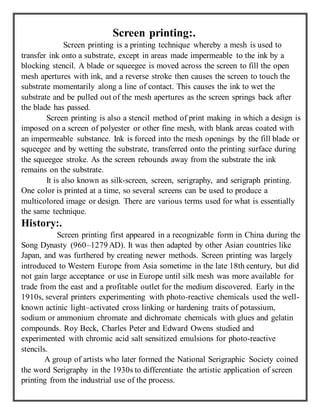Screen printing is a printing technique that uses a mesh screen to transfer ink onto a substrate. A squeegee moves ink through the mesh openings onto the substrate. Screens can be created with stencils to print single-color images or designs. Screen printing originated in China and was later adapted in other Asian countries and Europe. It offers versatility in the materials it can print on and industries it can serve. Various inks and techniques can create different visual effects. Automatic presses are used to efficiently print multiple copies onto garments or other substrates.




